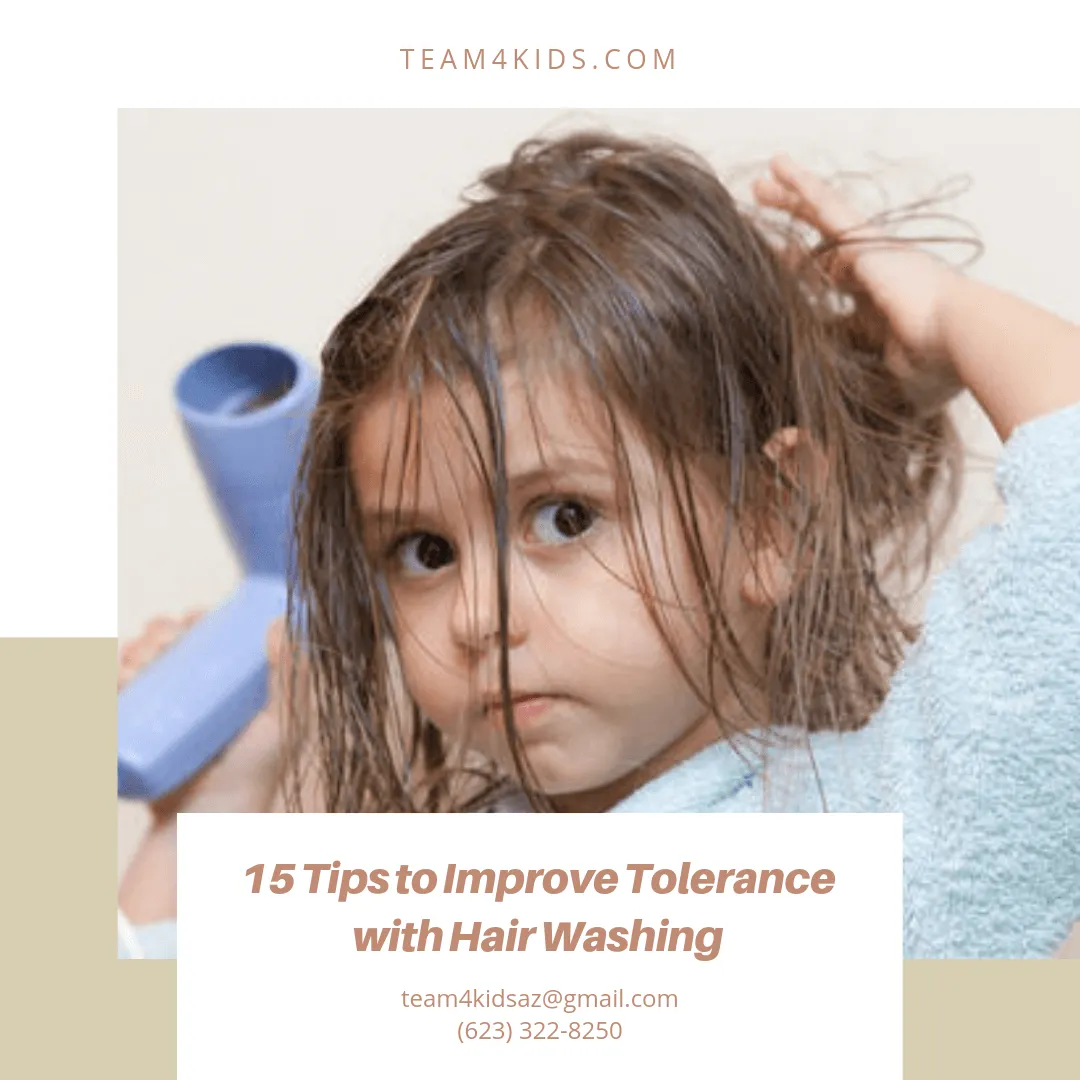Does your child have a difficult time tolerating getting their hair washed? Hair washing can be overwhelming to children with sensory processing concerns due to it overstimulating the tactile, vestibular and auditory senses. Here are 15 tips to help make it a more tolerable and enjoyable experience for you and your child!
- Try using low-suds and tear-free shampoo. Sometimes suds can be too overstimulating when washing and cause an adverse reaction.
- Use foam visors or goggles to protect children from water dripping into their eyes or forehead!
- Try completing calming proprioceptive activities before washing hair. These include squishing them between pillows on the couch, walking on their hands, deep squeezes to their arms and legs, playground activities and more.
- Provide a scalp massage to head before washing for added proprioceptive input. Complete this at random times during the week so it does not signal hair washing or fear for the child when it is completed.
- Make it a game! Have the child take turns with their favorite superhero figurine or doll. Wash the figurines head and then have the child take turns with the toy!
- Encourage water play with shampoo in other settings. Try taking a tub of water and shampoo outside to wash toys or play with suds using shovels, buckets, spoons and other water toys to lessen the hypersensitivity to suds.
- Use a wet towel over the lap as a wet towel provides a “weighted blanket” during bath time to help provide calming input.
- Instead of having the child lean back to rinse their hair have the child lean forward with a washcloth over their eyes to rinse. Sometimes leaning back can be disorganizing if the child has an aversion to vestibular input.
- Try different methods of rinsing their hair to see what is a more tolerable experience for the child. You can try squirt bottles, little toys that squirt water, watering cans, etc.
- Let the child have some control! Have the child choose a fun scented shampoo, let the child give a countdown of when you can rinse their hair or hold a mirror in front of their face so they can see what is happening to lessen their anxiety.
- Wash less! Dry shampoo is something that can provide clean hair without water. Try washing your child hair two or three times per week by using these products. Also, a shorter hairstyle could make it an easy experience for your child.
- Typically, the scalp is more sensitive when being washed. Try washing the ends of their hair for a week, then progressively move to their scalp over a length of time.
- Use waterproof earplugs to prevent water from going inside the ears as well as dulling the sound of the water and acoustics within a bathroom.
- It could be the temperature being too hot or too cold that is causing meltdowns. Use water thermometers or faucet thermometers to help find a comfortable temp for your child.
- Make it a routine and keep it predictable for your child! Use a visual schedule or written schedule of exactly what is going to happen during bath time. During bath time you can use “first/then” cues too. For example, “First, we are going to wash then we are going to rinse! First, we are going to rinse, then you get to pick a toy for doing such a good job!”
If you have concerns regarding sensory aversion with hair washing, haircuts, brushing teeth or other activities of daily living, please contact T.E.A.M 4 Kids for an Occupational Therapy evaluation to help address these skills!


